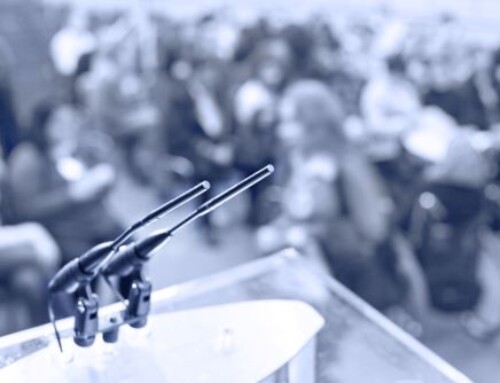When planning a travel incentive program, three topic generally come to mind: How to budget and plan it, who is eligible to participate, and who qualifies to earn the reward. While these are extremely important topics, one key element is missing – how to market the program to employees, better known as “internal customers.”
It might sound strange to consider employees as customers, but in reality customers aren’t just people who buy from you. They are anyone who consumes your corporate culture. This can include your vendors, suppliers, as well as your employees.
Most people are familiar with external customers because they are the ones who purchase products or services and in doing so provide corporate revenue to pay bills and expand the business. However, internal customers answer the phones, fill and ship orders, perform services, deliver supplies and fulfill all the roles necessary for a functional business. Without external customers, there would be no one to whom you could sell products or services. But without internal, worker bee customers there would be no one to do the work or make the product that the external customer wants to purchase.
Because these internal customers are necessary for a thriving business, you want to give them the same kind of good customer service you give outside consumers. You must market to them, especially when you are launching something as big (and impactful) as an incentive program!
Studies show that communicating with your employees makes them three times more engaged, and one-and-a-half times more likely to achieve financial performance goals. If you want your incentive program to run smoothly, your participants need a confident understanding of the details.
Here are tips to help you share your program with participants.
Generate Quality Communication
If you want to be understood, make sure your communication is top quality. For starters, you need to understand who you are trying to reach. When marketing to buying audience sectors you determine who you’ll be marketing to, and this practice is equally necessary for internal marketing. Researching and gathering information is vital, and it’s also good to recognize that any new program that changes the status quo will encounter resistance.
If you want to minimize this resistance, get people involved and ask questions early in the process. Seek honest feedback, candid answers that challenge the existing status quo.
- What do people think is subpar, and what do they think could be improved? Similarly, determine what can and can’t be changed. More than that, ask why things can or can’t be changed, and determine both the means of making change as well as the amount of time it will take for change to happen.
- Any change requires responsibility, so it’s also important to figure out who is able and willing to take ownership. Can your team work independently as well as in a group context? Can they challenge each other and push one another toward continued improvement?
- If you want to reduce resistance to a new program, and ensure that the changes you implement are sustainable, you must determine that behaviors that help influence your desired outcome. What are some of the desired behaviors that you believe will best support your goals? Who, in your organization, already have these behaviors?
PRO TIP: Rick Maurer has a great book about resistance to change and corporate culture called “Why Don’t You Want What I Want.” It’s a great book with several worksheets that can help start this kind of exercise out on the right foot.
Give Communication a KISS
You can also improve communication by adhering to the acronym KISS: Keep It Super Simple. It’s not necessary to share the nitty-gritty details with every single person. Many people won’t understand, or care, or want to read the fine print. Instead, make it easy on everyone and stick to communicating the essentials.
People need to know why you’re implementing the program, or why the change is being made. Maybe you’re looking to improve your global competitiveness, and customer surveys indicate you need to improve post-sales support. If it makes sense you can even put this into context such as your biggest industry competitor (who sets the benchmark standard) is 10% higher than you which is the reason for the change.) This is pertinent information to communicate. Likewise, be sure to include the metric goal of your program—for example, that you want to improve your customer satisfaction rating by 3% by this time next year.
Finally, establish clear, and ideally measurable expectations. This is the stage of communication where you explain the new guidelines, how you’ll measure progress, the available support systems such as training or resources, and other necessities. Apps, a website link, etc. all should be part of this launch.
It is important to keep the message simple, and also important to refine it. Create a theme, and stick with it, but recognize that the theme may need to be communicated differently to different teams. A senior team will require different messaging than a sales team or production crew, for example. Be true to your brand, but figure out ways to convey it effectively to your different groups. And be clear about what’s in it for them! If everyone understands the ways your program benefits them—whether through recognition, a prize or reward, etc.—they will be much more likely to act.
Tease the Senses
Sensory triggers are a great way to create a lasting memory or impression. As you put together your communication program consider the five senses:
- Hearing
Our sense of hearing, for example, is easily affected by music. Songs and jingles can be very helpful as sensory triggers, beneficial during recognition ceremonies, announcements, etc. However, if you’re using someone else’s work be sure you have the license to use it! You can also use a service like com if you want royalty-free, but fee-based music – and with so many options you can even select from a science-fiction inspired theme to tropical destination inspired theme song! - Sight
Appealing to your audience’s sense of sight is also important. Using the right images and fonts, and utilizing the right balance of white space, can make a big difference. Visual impressions are greatly effective and first impressions matter, so making use of banners, posters, emails, newsletters, supporting website/app, or other program materials is always worth it. Just as with music, make sure you have the appropriate licensing right for images. Avoid free sites, Google Images as these can lead to copyright infringement issues. Either use your own photography, or purchase a royalty-free, non-editorial, commercial license from sites like com, GettyImages.com, ShutterStock.com, etc. - Taste
As far as the sense of taste, every event benefits from food and drink. Have fun with it! Try using foods that tie into the destination where your travel reward will take place. Even better, consider doing this when entertainment can help launch the event, giving participants a sample of what they would experience if they win. - Smell
You can also play with participants’ sense of smell. If your reward is an island getaway, for example, consider bringing in the scent of coconut or pineapple. Using scented inks, candles, and other products will provide a unique, memorable experience for those in attendance. One note of caution on scents – the smell of bacon or freshly baked cookies may be irresistible for most people, but strong fragrances such as sandalwood, cedar, etc. may be difficult for people with environmental illness or allergies. If you plan to use fragrance as part of your communication plan, be sure you’ve done your homework to prevent any mishaps. - Touch
The sense of touch may be the hardest to appeal to, but possible with creativity! Printed material gives you a chance to shake things up. Use a variety of shapes and sizes, and consider using different materials/mediums. Some ideas to try to create different tactual sensory responses:- Worn woods like drift wood or barn wood
- Soft fabrics such as crushed velvet, silks or satins
- Smooth plastics or vinyl
- Stretchy rubber or slippery surfaces
Communication Checklist
Every program is different, and your program’s specific goals, message and audience will determine your communication methods. However, there are a number of reliable ways to communicate with your audience about your program, whether before, during, or after, so consider utilizing some of the following:
- Apps: Performance tracking, micro-data tracking for leaders/managers/participants, daily goals, challenges, etc. Apps can be both helpful and fun.
- Branded Items: Motivational tools, engagement items, and reminders of the program can all go a long way.
- Brochures: A quick summary of the program in bite-sized pieces is a helpful reference point.
- Graphics (on banners, posters, etc.): Helpful for consistency in marketing and branding.
- Letters: Instructions to managers and participants, updates and comments, notices to award winners, etc.
- Monthly Newsletters: Program updates, status, reminders, encouragement, etc.
- Movie/Video: Prelaunch, post launch, destination elements, q and a sessions, etc.
- Postcard/Direct Mailer: Prelaunch teasers, deadline reminders, etc.
- Posters: Prelaunch teasers, updates, winners, etc.
- Progress Emails or Text/SMS Messages: Messages performance-triggered at the individual level.
- Voicemails (Weekly or Monthly): For encouragement, reminders, updates, etc.
- Web Updates: Status updates, healthy competition, changes in policy, etc.
- Webinars/Webcasts: Can be helpful for explaining the purpose of the program, training, q and a sessions, etc.
- Website: Providing more details, instructions, updates, progress, portal for graphics, etc.
A Note on Budget
Budgeting isn’t the fun part of program planning, but it is necessary. As a rule of thumb, you should plan to spend between 10-20% of your program budget on internal communication. Sufficient internal communication will significantly improve your program’s chances of success, so it’s worth setting aside a budget to invest in the quality of the outcome.
Conclusion
Internal communications is vital for an effective, successful travel incentive program. Without it, confusion and apathy will run rampant, participants will lack motivation, and your program will likely be subpar. Generating quality communication by involving participants and offering a simple and refined message makes a big difference. Likewise, teasing the senses and utilizing many different communication methods significantly improves your likelihood of success. If you want a good incentive program, clear internal communication is vital.
If you’re preparing to launch a travel incentive program contact Gavel International to learn how we can help.
This article was last updated on November 28, 2022
- 8 Indicators of a Problematic Meeting Culture – and How to Solve Them - February 3, 2025
- Benefits of Micro-Offsite Events and Tips for Planning Them - January 27, 2025
- Sample a Diverse Selection of Global Cuisine in Toronto, Canada - December 9, 2024






